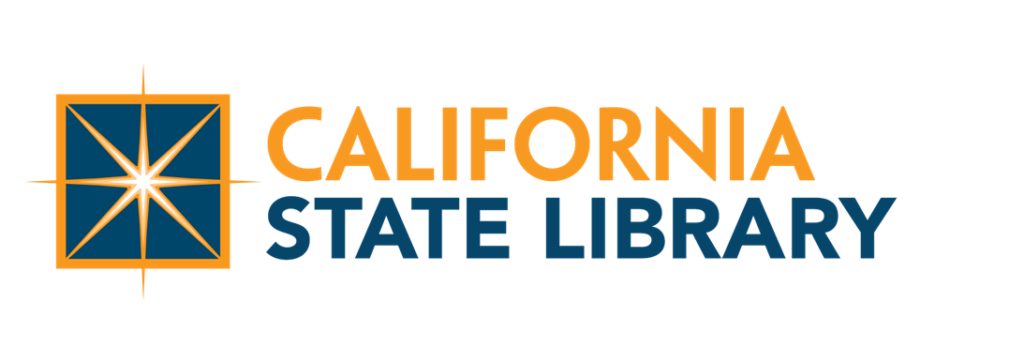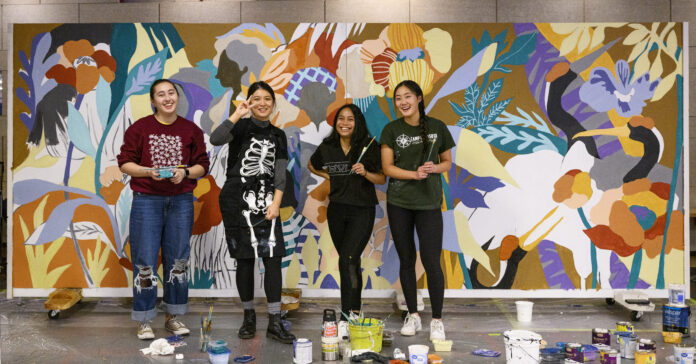by Allyson Pang, AsAmNews Contributor
On Jan. 17, in a bustling hallway on the main floor of the Washington State University (WSU) Compton Union Building–known by students as the “CUB”–some people had stopped to stare. In between the crimson pillars was a long panel half-painted in earthen shades, periwinkles and soft warm tones. Off to the side, the accompanying sign read: “AAPI Mural.”
The AAPI Mural was one of the events taking place on the Pullman campus in celebration the National Day of Racial Healing, which encourages conversations and healing around race.
According to WSU Special Assistant to the Provost for Inclusive Excellence Trymaine Gaither, this is the first time that WSU has celebrated the Day of Racial Healing.
“I want this day to be a day where we all connect as one community and take the opportunity to deepen and broaden our impact,” Gaither said in an e-mail interview with AsAmNews. “It’s important for us all to build our capacities to cultivate healing. And, healing is a process. When the day is over, hopefully, we will all feel healthier and more unified.”
Gaither brought in local artist and illustrator Jiemei Lin to lead this project based on her experience creating large-scale public murals in the Pacific and inland Northwest under the topic of racial justice. The two had initially met through Lin’s Black Lives Matter Movement mural in downtown Pullman.
In a couple of days, Lin digitally created the mural’s design. She took inspiration in the concepts of healing, recovery and inclusivity. Certain flowers and the red-haired crane represented healing and health from traditional Asian art and culture.
The Day of Racial Healing encouraged more attention to mental health, which the Asian community often avoids, Lin told AsAmNews in an interview. She said viewers should not fear their feelings. If they felt uncomfortable or felt really good about the piece, those feelings should be embraced.
From 10 a.m. to 4 p.m., Lin worked in collaboration with Fine Arts graduate student Reika Pratt, Fine Arts undergraduate student Kau’i Marley Samio and Pullman High School junior Heidi Lee. WSU junior and double-major in Fine Arts and Mathematics Roslyn Djang also joined in after seeing the mural while on her way to get lunch.
“For me, just to have a bunch of AAPI women, Asian women…just making a huge painting in public, that’s pretty badass I think,” Lin said.
She hoped her art could empower students from the AAPI community.
Growing up in Hangzhou, China, Lin reflected on the expectations of East Asian women and aimed to challenge them.
“It’s really nice to have a chance to work with the younger generation of artists like for example Kau’i from Hawai’i, she is graduating and thinking of her future,” Lin said. “It’s pretty cool to see how the next generation will take over with their work.”

One of the participating students Lee connected with Lin while researching the Pullman BLM mural she saw when going to Thomas Hammer, a coffee shop in downtown Pullman.
Lee had some previous experience with art murals, but this was her first public art mural.
“After two hours, I took a step back and I just looked at it and I was like ‘okay this is really going to be a good mural,'” Lee told AsAmNews. “The color palette was just really calm and it was really therapeutic to mindlessly paint.”
Lee felt the mural challenged the constant tensions and conflicts depicted in the media, instead bringing a sense of calm and beauty in diverse cultures coming together in unity.
She said she heard passing students complimenting the mural and some even stopped by to ask questions.

Associate professor of Painting/Inter-Media and mural facilitator Joe Hedges expressed how the mural provided public visibility to AAPI students’ identities and challenges they may face.
“With that kind of visibility, this was a really special thing and I don’t think I’ve seen anything like that on campus in my seven years of working here,” Hedges said to AsAmNews.
He said it was inspiring to see artists from different parts of the AAPI community coming together to celebrate their identities and helping with the mural.
“It’s those little things whether it’s painting a mural or stopping to share a moment of real solidarity,” he said. “It’s those little things that add up and move the needle and make things a little better for the next generation.”
For Lee, she felt the most connected to the mural’s center depicting a woman wearing a hanbok, or Korean traditional dress.
“I got to paint her so I thought that was really personal because I’m Korean,” Lee said. “It was cool to see that my culture was a part of this huge beautiful mural.”
This mural provided an opportunity for anyone to educate themselves on issues on race, Lee said.
“I think it’s important that people understand the fact that silence only helps the oppressor,” Lee said. “It’s not enough to be just ‘I’m not racist.’ You have to be anti-racist and you have to constantly fight against it and call out racism whenever and wherever you see it.”
Being part of the BIPOC community, Lin said she encourages White people to be involved in the racial healing process. She believed that when trauma happened, both sides were affected, which meant both required healing.
“Even though it sounds like it’s ‘our thing,’ without the involvement of Caucasian people, I don’t think that’s a real racial healing day,” Lin said.

AsAmNews is published by the non-profit, Asian American Media Inc. Follow us on Facebook, X, Instagram, TikTok and YouTube. Please consider making a tax-deductible donation to support our efforts to produce diverse content about the AAPI communities. We are supported in part by funding provided by the State of California, administered by the California State Library in partnership with the California Department of Social Services and the California Commission on Asian and Pacific Islander American Affairs as part of the Stop the Hate program. To report a hate incident or hate crime and get support, go to CA vs Hate.

